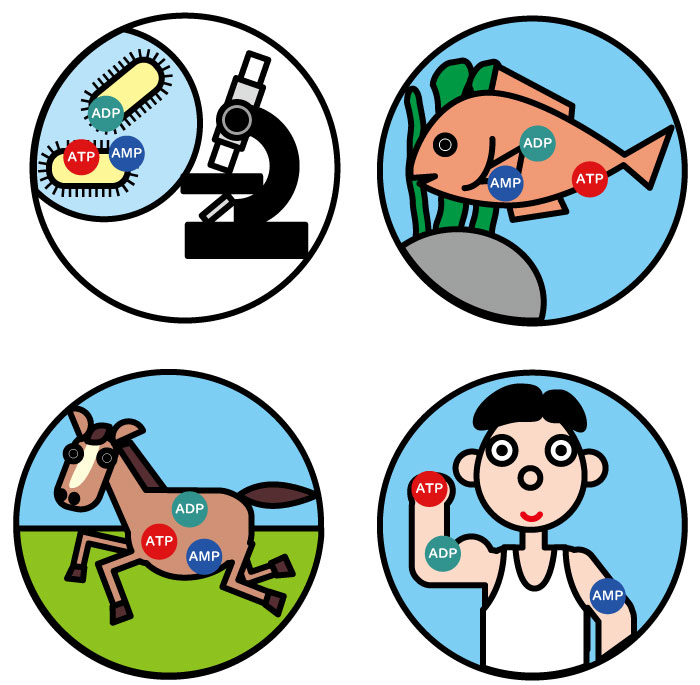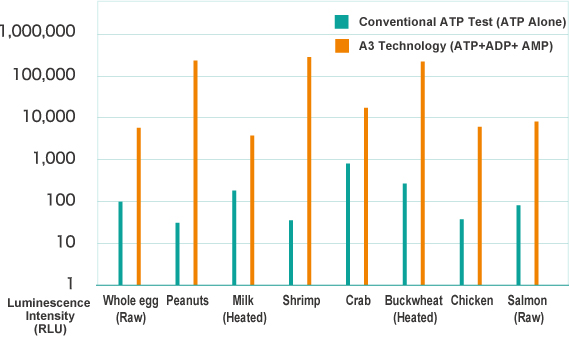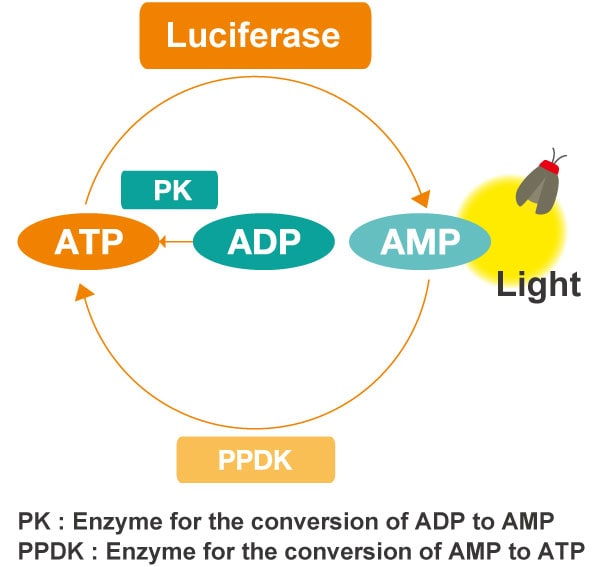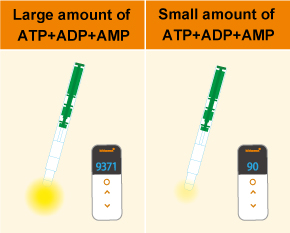In the section “What is the ATP Test (Kikkoman A3)?” we explained that it is an inspection method using ATP (adenosine triphosphate), ADP (adenosine diphosphate), and AMP (adenosine monophosphate) as soil indicators.
Here, we would like to expound on the reasons we adopt ATP and its derivatives for the measurement.
Why do ATP, ADP, and AMP function as soil indicators?
Every living being on the earth contains ATP, ADP, and AMP.

ATP is a molecule used as an energy source in every living thing. It is also contained in various organic matter, as well as microorganisms such as bacteria, foods (e.g., meat, fish, and vegetables), and body fluids (e.g., human perspiration, saliva, etc.). The presence of ATP means that there is something present derived from living organisms. The detection of a large amount of ATP indicates the presence of food residues typically due to ineffective cleaning which can result in an increased risk of bacterial proliferation in the food manufacturing settings, the possible risk of infectious agents in medical settings, and residual soils on surfaces due to ineffective cleaning.

It is also known that relatively large amounts of ADP and AMP are contained in raw foods such as meat, fish, and dairy products, and in processed food such as bacon and sausages.
What is the measurement procedure?
(the measurement principle of the ATP Test (Kikkoman A3))
An enzymatic reaction which normally occurs in the bioluminescent organ of fireflies is utilized in the ATP Test (Kikkoman A3).

A3 Test
ATP is changed to AMP through the reaction with luciferase. The reaction leads to energy emission with luminescence. The amount of luminescence – light produced – is proportional to the amount of ATP present. This means the amount of ATP can be evaluated and quantified using equipment to measure the amount of light produced by the reaction.

The presence of a large amount of soil (and thus a large amount of ATP) on a swabbed surface results in strong luminescence with a high measurement value shown on the Lumitester instrument. The luminescence is quantified in Relative Light Units (RLU), quantifying the relative amount of luminescence.
The novel ATP Test (Kikkoman A3) uses the unique enzymatic reactions in the proprietary A3 chemistry of our LuciPac reagents to change ADP and AMP to ATP enabling the measurement of the total amount of ATP + ADP + AMP, producing a significantly more highly sensitive measurement for the detection of residual soil which can be missed when measuring ATP only.

